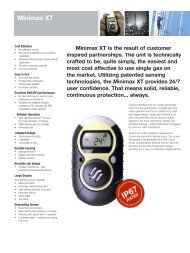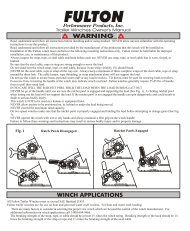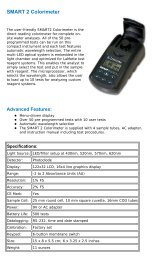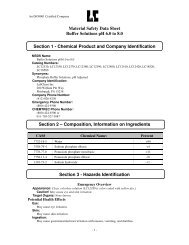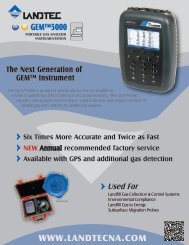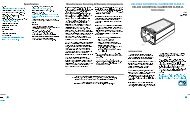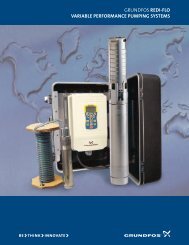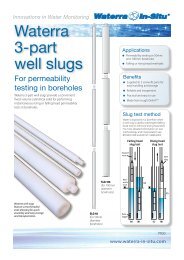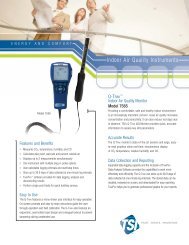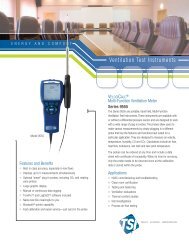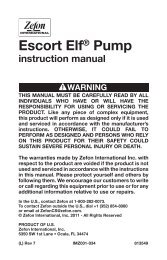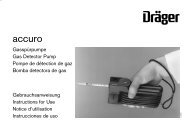cg-550/030/a/gt/hp maintenance & operating instructions - Field ...
cg-550/030/a/gt/hp maintenance & operating instructions - Field ...
cg-550/030/a/gt/hp maintenance & operating instructions - Field ...
You also want an ePaper? Increase the reach of your titles
YUMPU automatically turns print PDFs into web optimized ePapers that Google loves.
SPECIAL INSTRUCTIONSAIR OPERATED EQUIPMENTWhenever compressed air powered equipment is used, it is the air compressor which isthe primary motive force to drive the equipment. Whether the compressor is driven by adiesel or gas engine, or an electric motor is immaterial. The important factor is itscapacity to provide a sufficient QUANTITY of air expressed in terms of CUBIC FEETPER MINUTE at a specific PRESSURE, usually expressed in terms of POUNDS PERSQUARE INCH. Thus, compressors are usually rated in terms of X CFM at Y PSI. (Forexample, 250 CFM at 120 PSI) Occasionally, you may see a horsepower rating, but itis much more common for compressors to be rated as previously described.In any event, the capacity to do work is directly related to the VOLUME andPRESSURE of the compressed air supply. Air powered equipment is designed toaccomplish specific tasks and therefore, requires a specific MINIMUM VOLUME ofcompressed air at a specific PRESSURE.With any air powered equipment, it's perfectly acceptable to use a compressor with ahigher volumetric capacity than the equipment requires, since the equipment will onlyuse the amount of air that it needs; however, the stated pressure capacity of theequipment should not be exceeded by more than 10%. Excess pressure can beharmful to the seals of air motors and cylinders and will significantly shorten the servicelife of the equipment.Attempts to run pneumatically powered equipment on compressors of lower capacitythan required will likely yield disappointing results.RECOMMENDATIONSWhen using air powered equipment, some simple rules and procedures will help assurea successful job:1. Keep compressor properly serviced with adequate fuel and engine oil and keepcompressor oil at proper levels. Drain condensation from receiving tank beforestart-up.2. Keep hose runs between compressor and machine as short as practical.3. Use air hose that is rated for the pressure capacity of the compressor and ofsufficient diameter to transport the volume of air that the compressor is rated todeliver. (In other words, use a BIG hose!)4. Never use air supply hose for any other purpose, and alwaysblow the hose out before connecting to equipment at the start of a working shift.®



